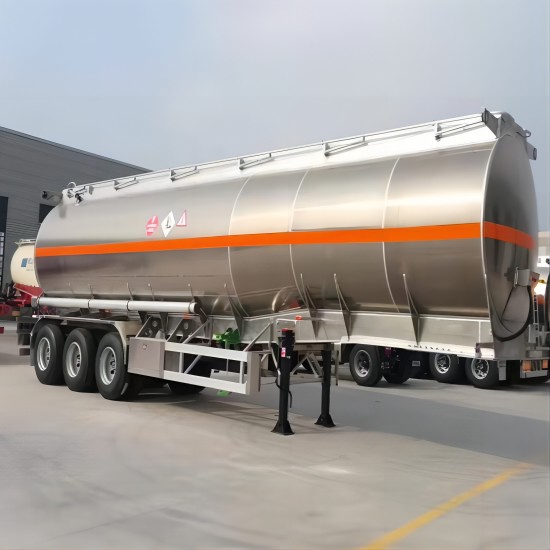Description:
Fuel tanker trailers for sale are specialized vehicles designed to transport a variety of liquids, including gasoline, diesel, kerosene, palm oil, edible oil, and more. These fuel tankers can significantly boost the efficiency of your transportation operations.
The primary structure of these trailers includes the tank body, oil filling port, oil drain valve, manhole cover, oil pipes, and other components.
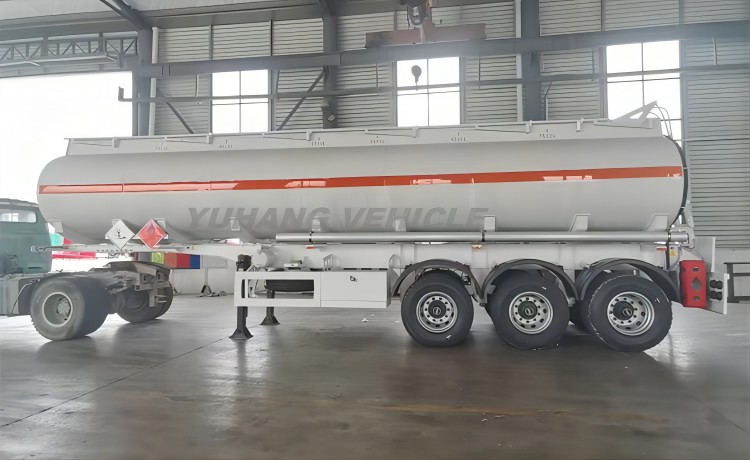
YUHANG offers fuel tanker trailers made from carbon steel, stainless steel, and aluminum alloy. The tank capacities are available in options of 36,000 liters, 40,000 liters, 50,000 liters, and 60,000 liters. We also provide customized fuel tanker trailers to meet specific customer requirements.
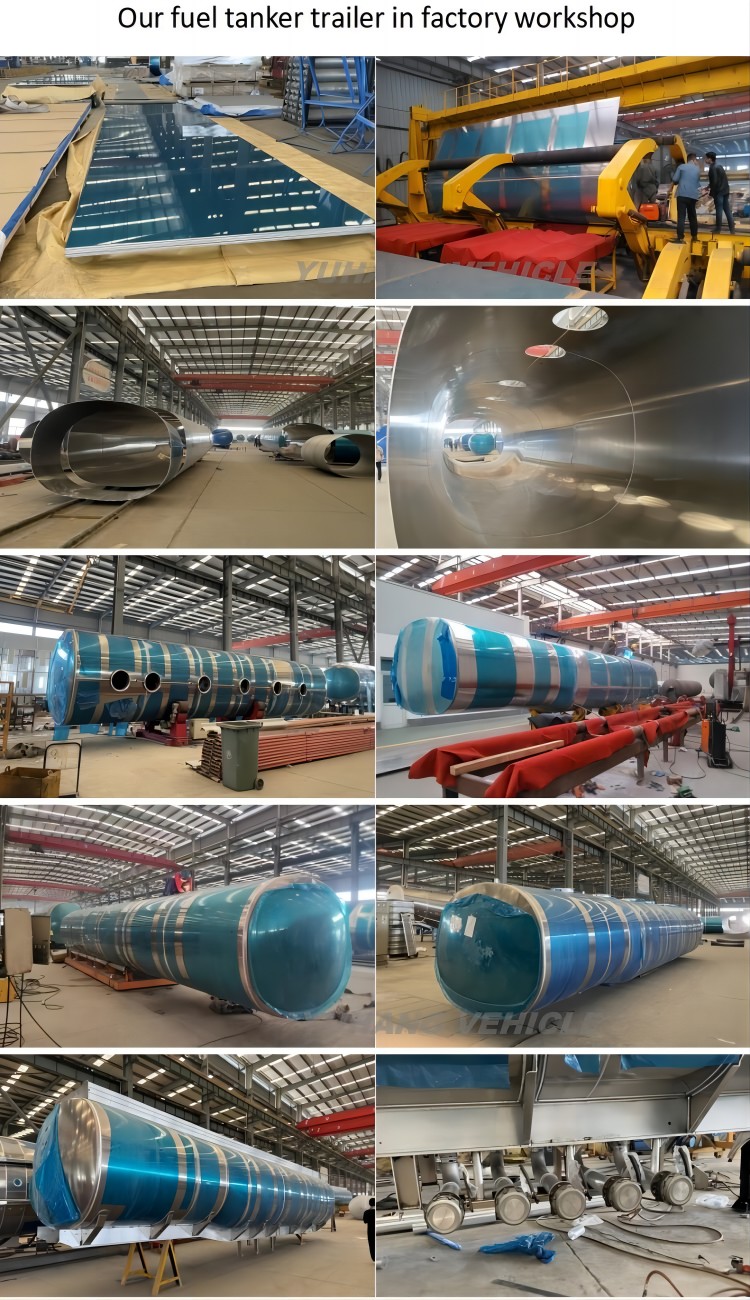
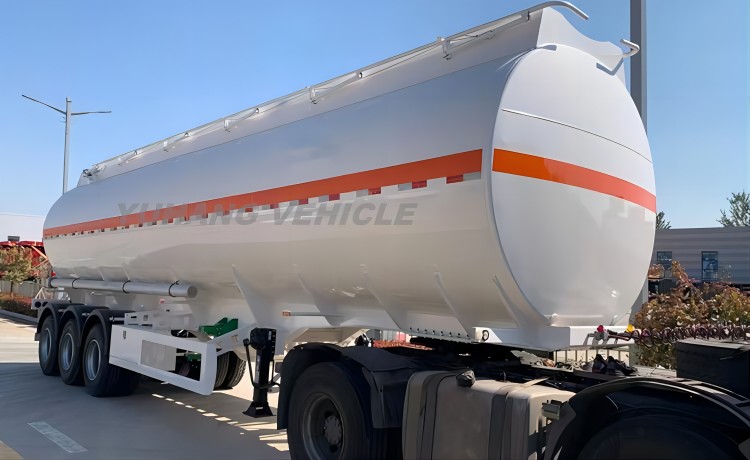
The interior of the tank body is fitted with anti-wave plates to effectively reduce the impact of the liquid on the tank. The tank is divided into multiple compartments, allowing for the transportation of different types of liquids simultaneously.
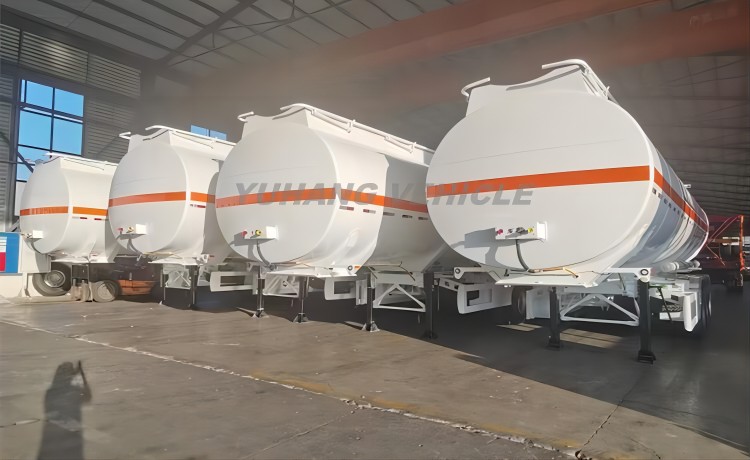
Specification:
Dimension: 12000mm*2500mm*3800mm Tare Weight: about 8500kg Total Volume: 45cbm or customized Main beam: welded design Q345B carbon steel Tanker Body Material: 5mm Q235 carbon steel End Plate:5mm Q235 carbon steel Manhole Cover:carbon steel Bottom Valve: aluminum API pneumatic bottom valve Discharging Valve:diameter is 4 inch Compartemnts:5 compartments or customzied Discharing Valve:diameter is 4 inch Discharging Pipe:4 inch rubber hose,2pcs,6m/each Axle: 3 axles*13T/14T/16T*BPW/fUWA brand Landing gear: JOST brand King Pin: JOST 2.0 or 3.5 inch Suspension:mechanical suspension or air suspension Leaf Spring:90(w)mmx13(thickness)x10layers Braking System: WABCO brand Rim: 9.00_22.5/8.00_20 Tire: 12units,12.00R22.5/315.80R22.5/11.00R20/12.00R20 ABS: optional Painting: 1layer od anticorrosive primer and 2 layer of top coats Accessories: one standard tool box Shipping Terms:by bulk cargo/RORO/container
Advantage:
- Design: The manufacturing facility must undertake the design, configuration, structural layout, and material selection of the tanker trailer based on the customer’s actual transportation requirements and relevant market regulations. During this phase, a comprehensive assessment of factors such as the trailer’s load capacity, cargo type, usage environment, and tank body pressure is essential.
- Manufacturing: This stage involves the production of various components, including the vehicle frame, tank body, manhole covers, and anti-wave plates, in accordance with the design specifications. Advanced professional equipment is employed to perform operations such as cutting, stamping, riveting, and welding to ensure the trailer’s structure is robust and stable.
- Assembly: At this juncture, the manufactured components are integrated with axles, tires, leaf springs, toolboxes, braking systems, lights, and other essential parts. The assembly process requires careful consideration of the interrelationships between components to ensure the overall performance and operational efficiency of the trailer.
- Inspection: A thorough quality inspection of the completed oil tanker semi-trailer is mandatory to guarantee its safety and reliability. The inspection covers aspects such as the trailer’s appearance, dimensions, installation accuracy, and the functionality of various systems.






